Boats perform best floating at their designed waterlines. Many small sailing boats force you to sit at the tiller with your weight too far aft for proper trim, and the tiller can’t be reached if you want to sit to windward. If the bow is aimed at the sky, out of the water, you lose waterline length and sail slower. And it looks ugly. Even if the bow isn’t out, having the stern settle deeper can create lee helm, making the boat bear off in a puff of wind. With a tiller extension you are not forced to be an arm’s length from the tiller. Besides trimming the boat fore and aft, it also allows you to sit well to windward to balance the boat in a breeze. You can stand when looking for a landmark or the breeze. Racing-dinghy sailors call extensions hiking sticks, because hiking—getting crew weight to windward—is essential for speed.If you have worked hard to make a nicely shaped wooden tiller, you don’t want it cluttered with plastic, stainless-steel, and aluminum hardware. I wanted to be connected to my classic Peter Culler designed Good Little Skiff’s tiller with a nice bit of wood. I also wanted to be able to take the extension off quickly and leave the tiller with nothing more than a small, unobtrusive hole.I’ve tried simple extensions made with just a vertical bolt connecting them on top of the tiller. They tend to bind up and can’t be lifted for sailing while standing up. A common universal joint, with double U-shaped fittings, solves this problem but spoils the look of the tiller and isn’t easily made in the home woodworking shop.
Join The Conversation
We welcome your comments about this article. If you’d like to include a photo or a video with your comment, please email the file or link.
Comments (14)
Leave a Reply
Stay On Course

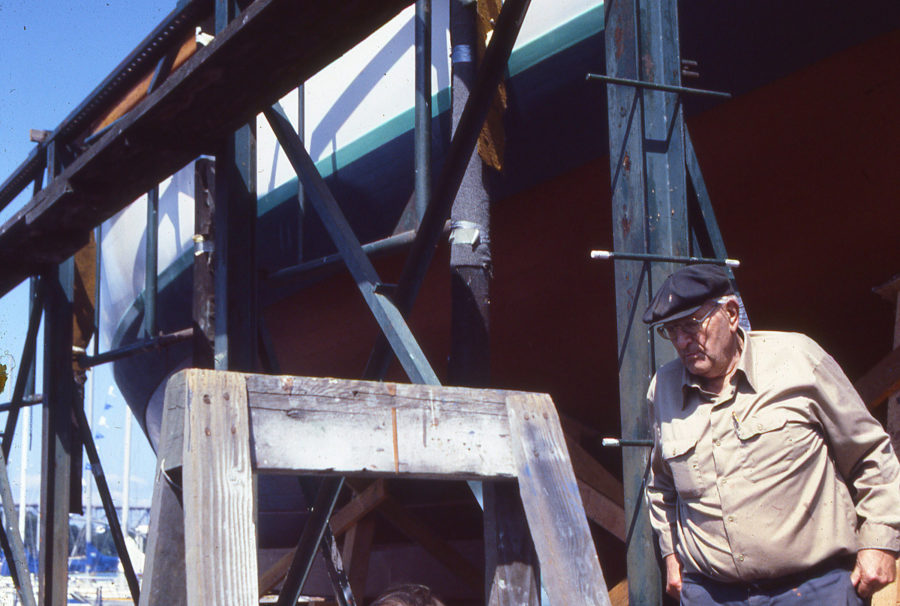
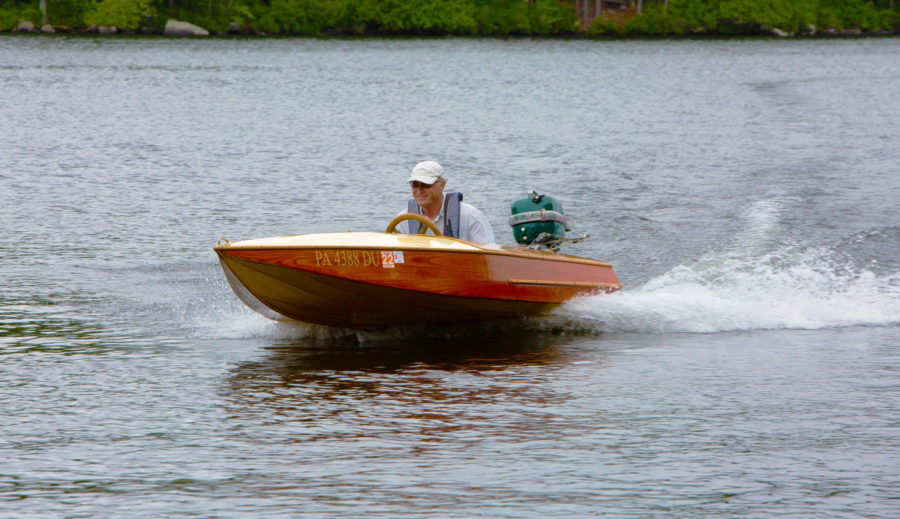
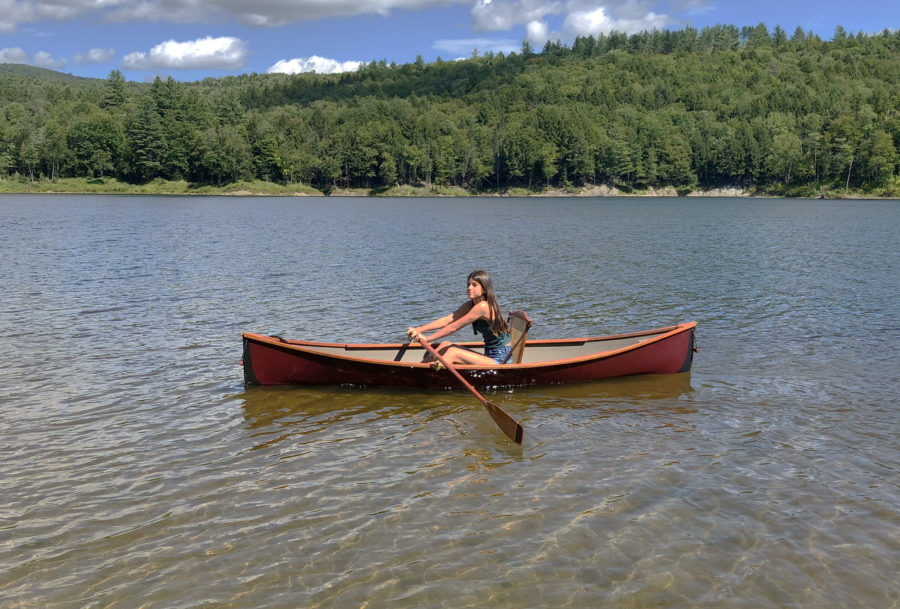
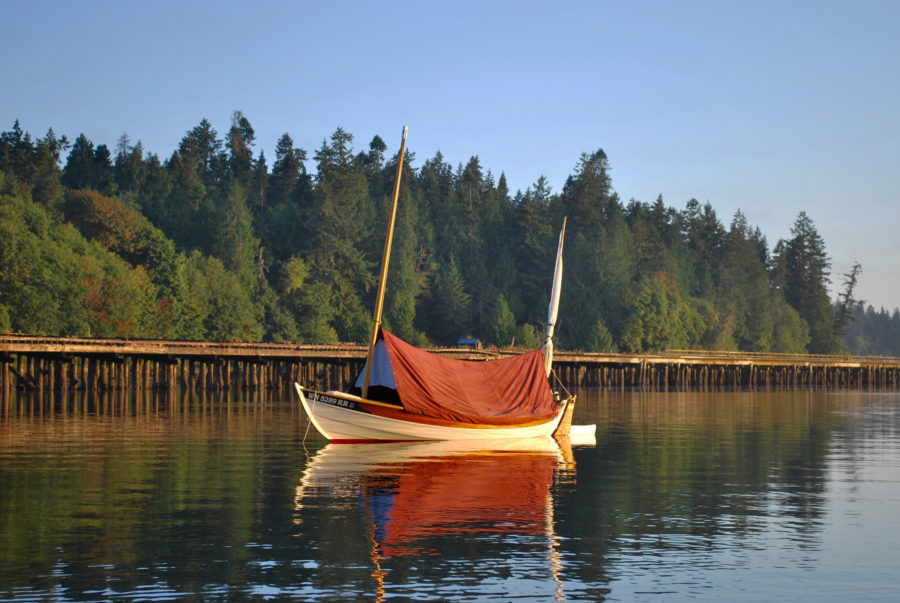
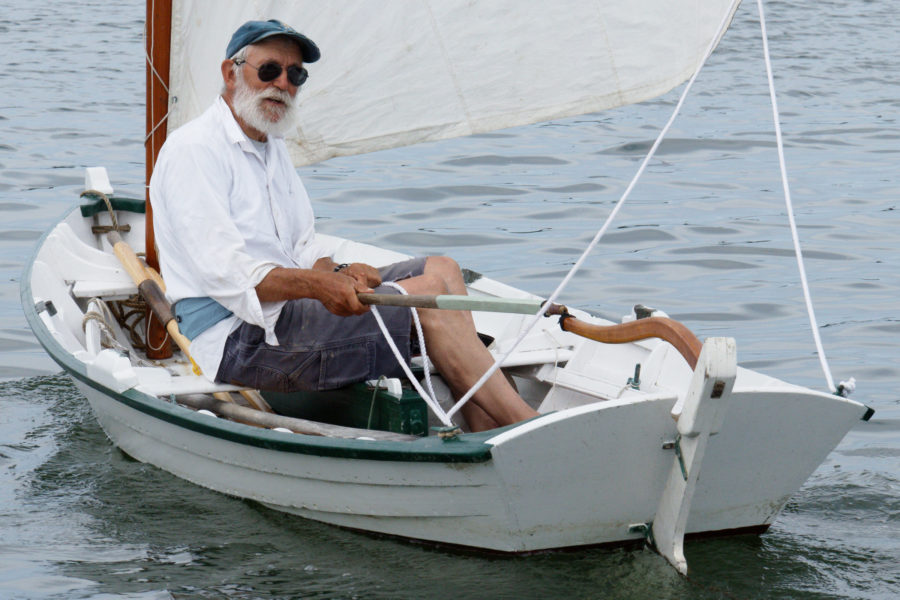
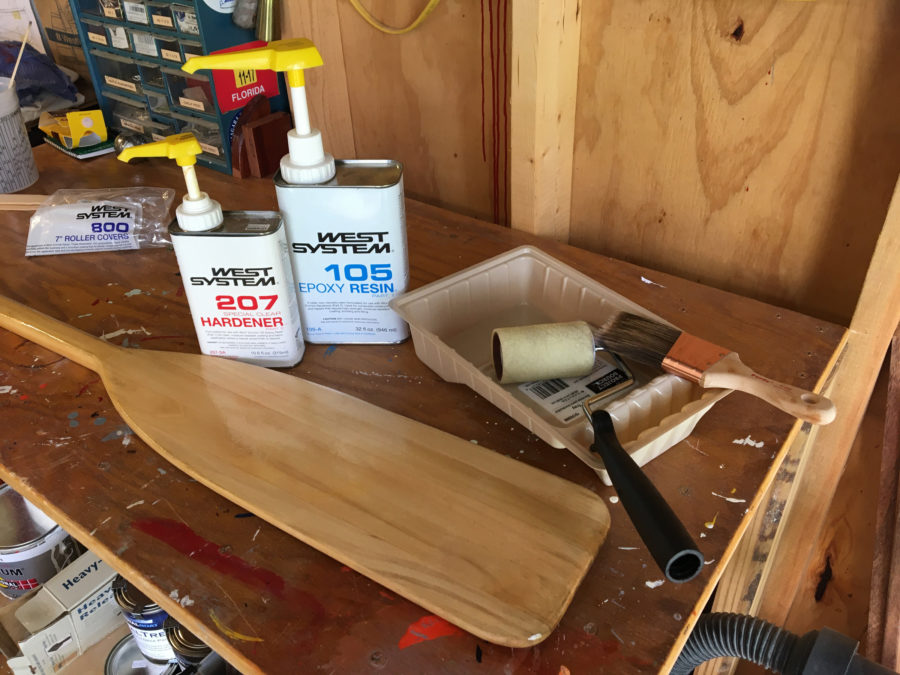
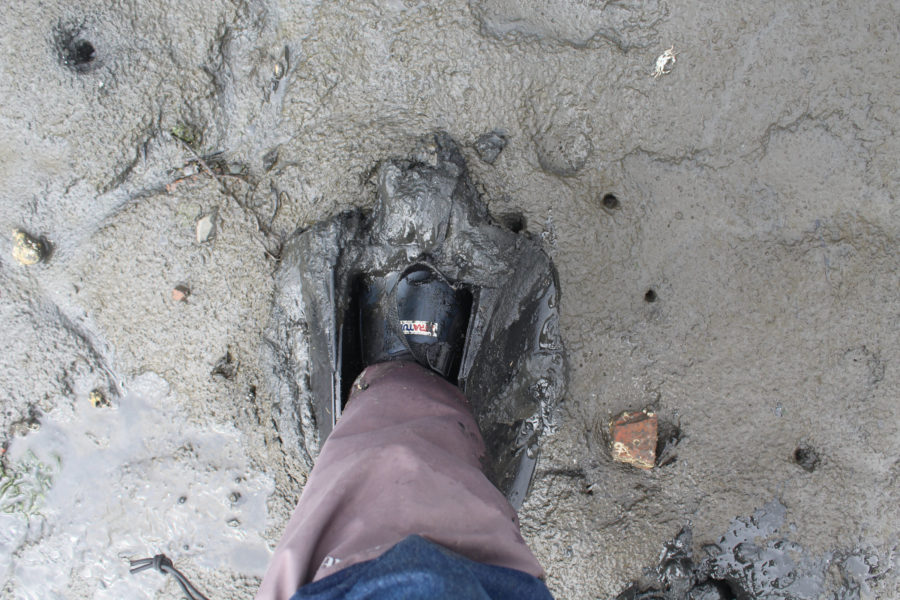
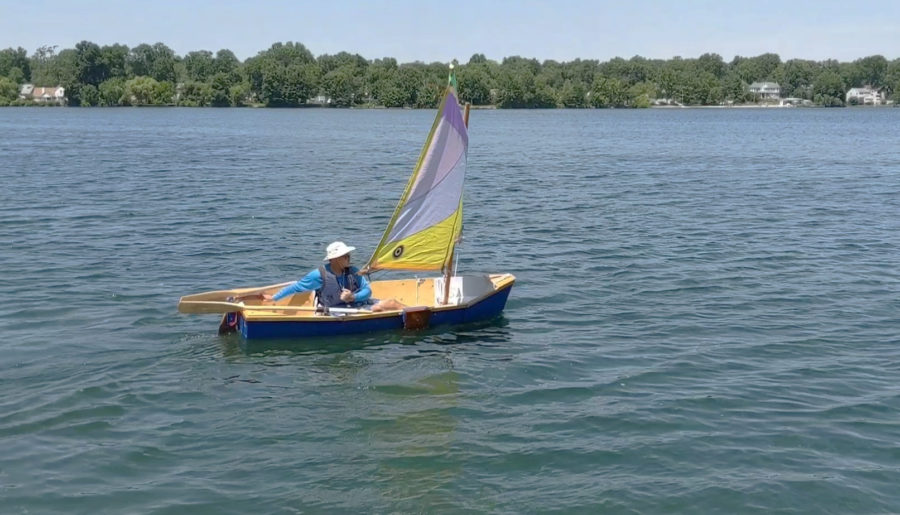
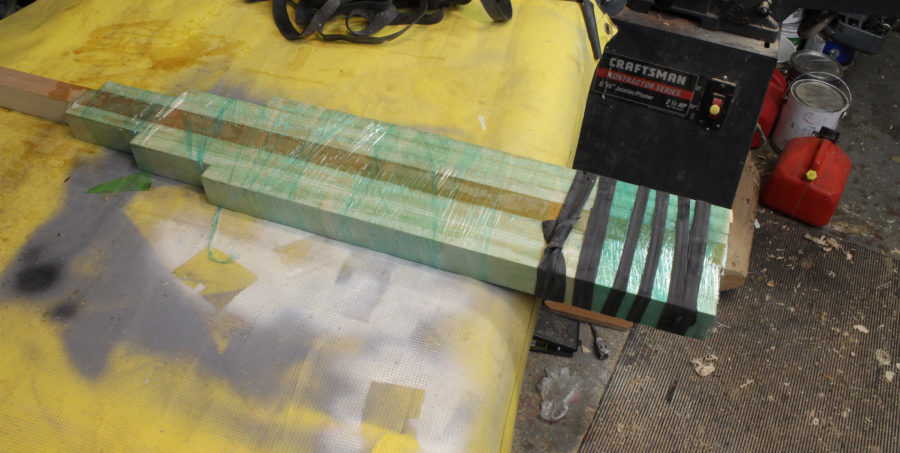
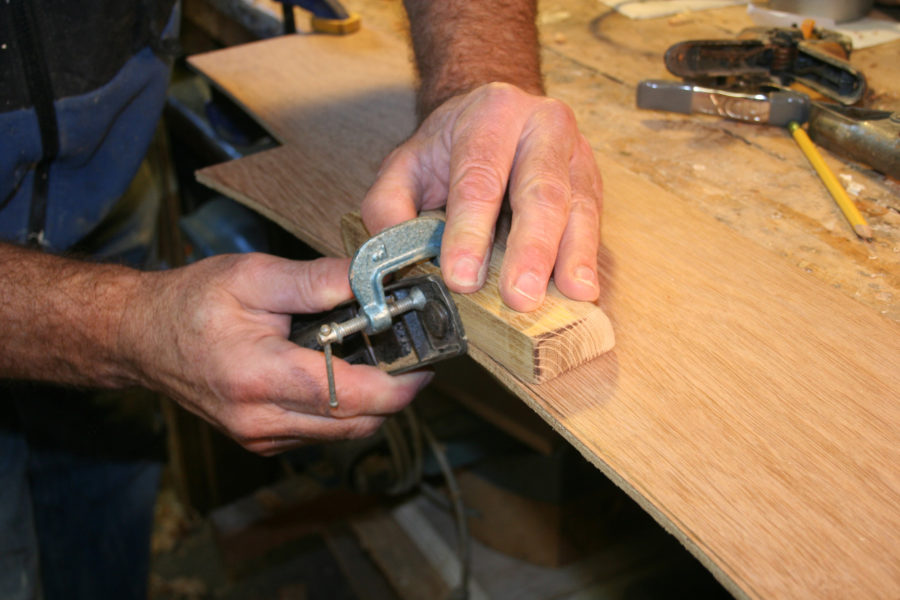
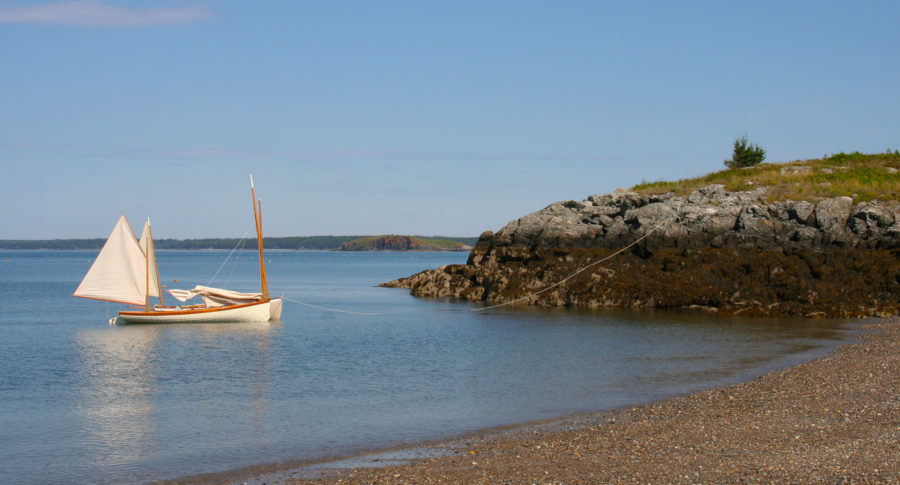
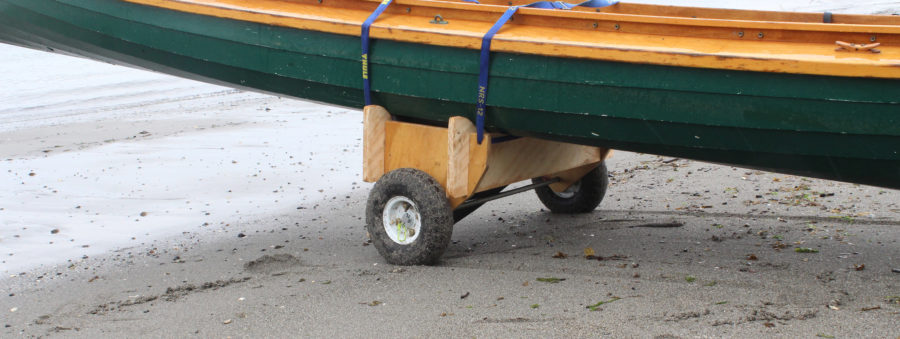
One thing that has always bothered me in photos of traditional boats, is that the tiller is so short, with the skipper sitting way to far aft. When I was being taught to sail, keeping the boat on her lines was of prime importance to sea-kindliness, and speed.
Once I showed up to a race sitting against the transom, with the bow way up out of the water. Halfway up the weather leg a friend noticed my bright yellow boat, and asked where I had been. My boat’s trim marked me as a “non-sailor,” and no one had even seen me.
I am dealing with the same issue on my new-to-me skiff. The tiller is too low to be used from the stern sheet and too short to be used from the next seat forward behind the daggerboard. So the only place to sit is between the two on the floor, which is painted in non-skid and I was wearing shorts. It was still a good day but the non-skid tore me up pretty good. I found a tiller extension swivel online but I kept thinking about why would someone make a tiller like that. My thought it is that probably a lot of these new/old-style skiffs based on workboats probably copied the tiller length and workboats probably had a load up front and the helmsman standing up a lot, and if you stand up in my boat the tiller is perfect.
While I was thinking this I realized my boat was built (allegedly) by a man who used it to set sport crab pots in Yaquina Bay, meaning he also probably had pots up front keeping the trim down if he stood or sat aft. But I am just a lake sailor and am adding an extension.
As someone who grew up with model airplanes, I had a good familiarity with bellcranks. These come off as an arm at right angles to the actuated surface. Sailing canoes, various racing shells and some Whitehalls use them.
The kind I favor are attached neatly to the rudder head with a mortise and tenon joint. (As the joint wears over time, a wedge can be used to hold the arm in place.) They can have either one or two arms.
The one arm type have a universal joint, either rubber or metal, near the end. These require a push-pull rod which can come as far into the boat as you choose. I use aluminum tube for the push-pull. I generally finish it with turk’s heads and coach whipping. Modern materials do not need to be ugly.
The two-arm type has a hole in each end. A cord is passed through the holes and it is set up long enough to allow the sailor to sit anywhere in the boat. I have set up a sailing kayak this way. Look ma, no extra holes in the deck.
The former is what is popularly termed the Norwegian tiller and is really common now that the various ketch-rigged row and sail boats have become common. The real simple ones that are common in Norse traditional craft have a round hole in the rudder head and just a peg on the cross head/ tiller joint, splitting the job into two parts.
The two-hole rope type can be anything as simple as steering lines for a rowing boat to a line running around the boat. The most interesting one I’ve seen is rigging crossing tiller lines and tying them to floor boards so that each passes and touches the rower’s calf. Just depress your leg a touch and the boat turns.
While I agree that a tiller extension can be very useful, both for fore-and-aft trim and for hiking out in a fresh breeze, I do find it is not always the most convenient solution. On my 15′ oyster skiff, a rather skittish little craft with only 4′ 3″ of beam, I find that in light airs I spend a lot of my time crouching in the lee bilge looking up at the mainsail with my back to the tiller. In this position it is hard and tiring to maintain a steady hand on a tiller extension for a long tack.
I do use a tiller extension in strong breezes, but in light air I have found that a bridle provides a useful alternative. I use a crude implementation of the steering mechanism used in Herreshoff’s Coquina. I attach a loop that runs from the tiller out to a bull’s eye fairlead under the gunwale on one side, then forward along the hull to another fairlead under the thwart, across to a fairlead on the opposite side of the boat and then back down that side, returning to the tiller via a fourth fairlead. I do have a jam cleat under the thwart to lock the bridle if I need, but usually I find that if the tension on the bridle is sufficient it acts like a primitive auto pilot, keeping the boat on its heading until I tug on the bridle or nudge the tiller. The advantage of this is that I can steer from any position in reach of the bridle.
Although my tiller on JAKE is still the prototype and not elegant as many tillers, I made a tiller extension out of a piece of ash intended to be used as such. It consists of a clevis made by epoxy-gluing two rounded ears on each side of the extension arm. A modified fast pin is attached to the extension with a small length of SS rod. The tiller has only a hole into which the snap pin snugly fits.
This arrangement allows for just a hole in the tiller, a full range of motion, and stows neatly along the tiller itself.

One thing I sometimes do with a tiller extension is find a place that the extension can jam just using weather helm to hold it. Pretty easy to do in a traditionally framed boat, not so easy on a modern frameless build.
Great article! I am a beginner sailor and just bought a used, inexpensive Hunter 90 boat (9’6″ long) boat and the rudder has a metal arm but is missing the extension. I just bought a universal joint and have been trying to decide what to use for the extension. Here’s my rookie question: what’s a good length for the extension? 30″? 36″? Longer? I definitely ran into the problem of sitting too far aft and having the bow sticking out of the water. My solution for now is to hold the rudder with my hand behind me or to face semi-backwards and not be able to see where I am going! So, anyway, any advice on the correct length of the extension arm for that size boat is appreciated.
Thanks!!
Dear Mr. Fuller,
What a pleasure to come across this article on tiller extensions and, with it, you. I purchased an old C-Lark for my kids and me to use where we live on Howe Sound. While not a sailor, I’m trying hard to give my kids some experience. So far we’re all learning together in a rather protected setting. I’m also lining up sailing friends to bestow us with a few nuggets of their knowledge. After reading this, I think a tiller extension will help improve our sailing as we can be more careful with trimming our boat. We’ll see what we come up with, though all I have for old ski poles is a bent one for skate skiing.
All the best!
Good question, Larry. I had the same question before I found Ben’s article and your query.
Here’s what I found: The dinghy sailors (e.g., Laser, Opti) sail with the extension in FRONT of them, as they face forward while hiking. Mik Storer (www.storerboatplans.com) has a good discussion of the advantages, and how they tack, and he even points to some racing videos. I’m going to start with an extension that’s as long as my tiller (around 39 inches)—because that’s how long my piece of wood off the scrap pile is. If that’s not long enough, I’ll find another stick and try it. It’s always easy to make it shorter!
Jerry – thanks! I ended up using a length of 1/2″ diameter PVC pipe (not concerned that it’s not wood, since the boat seems to be made of some sort of thick PVC-type material. Drilled a hole through the PVC and the hinge and slide a length of heavy metal wire through it, bent it around the pipe and wrapped that end of the pipe with white Gorilla tape (like Flexi-seal tape) – looks and works great! I’ve started with 36″ which is plenty long for me. I’m able to face forward no problem. It has really helped me move along the learning curve. What I want to do now is to create some sort of handle at the end of the extension. I can probably fashion a T-shaped handle with with a PVC “T” connector. And yes, better to cut the extension long and make it shorter if needed. Thanks again!
Just what I was looking for. I had a keelboat that had a DIY tiller extension made with a simple loop of elastic cord that slipped over the knob at the for’d end of the tiller. Worked well. Now I sail a Mirror Dinghy and I need to make my tiller flexible in the up-down because I’m old and need to stand and stretch my legs once and a while. Great article, thanks very much.
I sail a 10′ Trinka dinghy and would love to sit on the center thwart like the author in the picture. But how does he duck under the boom when tacking ?
I like the line/clove hitch idea. We have a lot of the bolt on extensions on our Alcort fleet; I think I’ll convert a few over to line lashing and make Skipper try them out.
On the subject of trim and tillers, when rowing do you remove the rudder or do you have a system to keep rudder centered and/or steer with it a bit. Tiller tamer, line steering?
Cheers
Clark and Skipper